Silver Certificate Dollar Bill Value: How Much is it Worth Today?
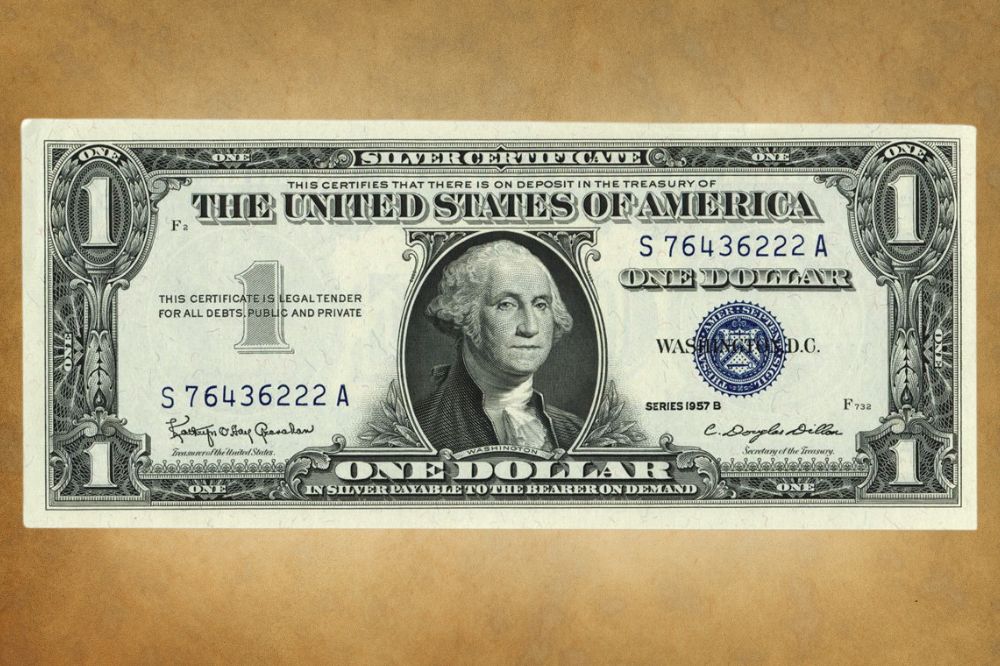
Do you own a silver certificate dollar bill and wonder how much money you can get for it?
You’ve come to the right place!
Whether you want to buy or sell, this guide will explain everything you need to know about silver certificate dollar bill value.
The truth is that most silver certificates are not worth more than their face value. But, if you know what to look for, you might discover that yours is worth good money, possibly thousands of dollars.
So, let’s jump in and find out just how much is a silver certificate dollar bill worth?
How Much Is A Silver Certificate Dollar Bill Worth?
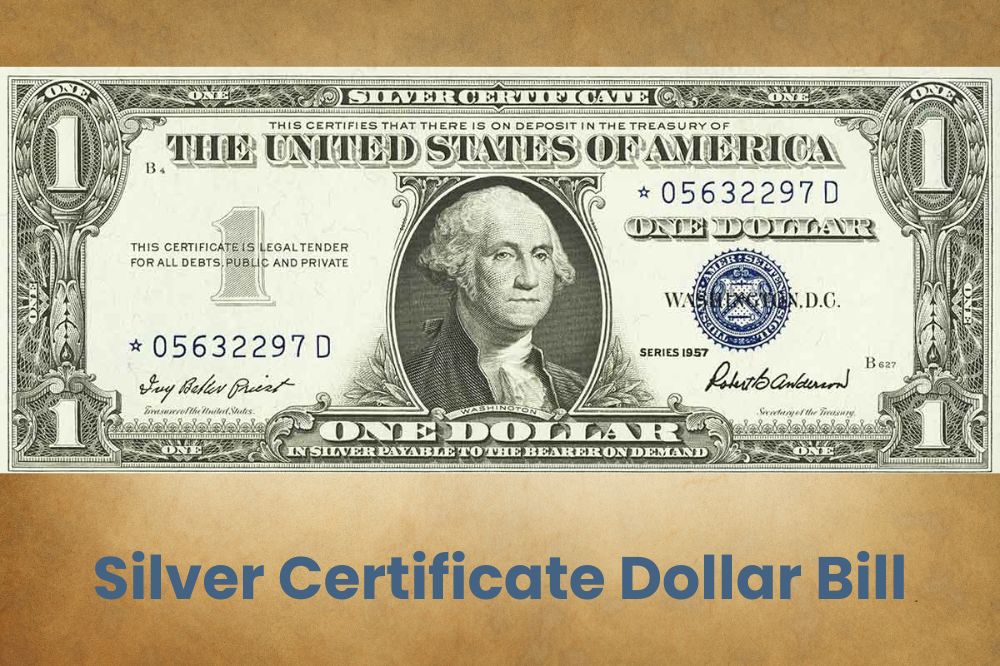
Silver certificate dollar bills are no longer used to redeem silver coins or bullion. But they are still legal tender, and some varieties are collectible.
Several factors influence the value of a silver certificate dollar bill. These include:
- Condition
- Serial number
- signature combination
- Series
1. Condition
Like with other currencies, the physical condition of silver certificate dollar bills is important in determining value.
Crisp, uncirculated bills are the most desirable in numismatic circles. Silver certificates graded MS60 to MS70 will typically fetch a premium, but this will also depend on other factors, such as a star sign on the certificate’s serial number.
Be careful when dealing with worn-out silver certificates, as these are generally not worth more than their face value. A really worn-out certificate dollar bill is not something most investors will want to pay money for.
We recommend having a professional grader assess your silver certificate dollar bill and properly grade it. Silver certificates $1 bills in gem condition are rare, and this will usually fetch hundreds or thousands of dollars.
2. Serial Number
All silver certificates have a unique serial number. Serial numbers have always been an interesting feature that collectors use to estimate the value of paper currency.
Some serial numbers are rare and may add a premium to your silver certificate dollar bill. Examples of such rare serial numbers include:
- Palindromes: These serial numbers read the same from left to right and the other way.
- Repeating numbers
- Single repeated number
- High numbers
- Low numbers
If you have a silver certificate dollar bill with interesting serial numbers, it could be worth much more than its face value.
Another highly sought-after serial number variation has a star. These silver certificates are aptly known as star notes. The star, which may appear at the start or end of the serial number, was a way to indicate that the paper note is a replacement for a misprinted note to avoid duplicate serial numbers.
Stars can significantly increase the value of a silver certificate dollar bill, especially if the bill belongs to a series that typically does not have stars on the serial numbers.
Silver certificate bills in crisp condition with a star in the serial number are some of the most valuable and collectible paper notes.
3. Signature Combinations
Did you know that silver certificates were once hand-signed, usually by the Registrar of the Treasury and the Treasurer of the United States?
The combined signatures can add a premium to the value of your silver certificate, but only if the combination is rare. Rare signatures are those that appear only on a few silver certificate bills.
In the past, and today, owners of silver certificates could mail their bills to the U.S. Treasury and have an official there sign and mail back the bill. These silver certificate dollar bills are unique and typically worth hundreds or thousands.
Professional graders like the Paper Money Guaranty Company can help determine if your silver certificate has a unique and valuable signature combination.
4. Series
Silver certificates are referred to by the year they were designed as opposed to the year they were issued. These dollar bills were issued in five different series, with some series being more valuable and collectible than others.
The five series of silver certificate dollar bills are:
- Series 1878 and 1880
- Series 1886, 1891, and 1908
- Series 1896
- Series 1899
- Series 1923
Series 1878 and 1880 Silver Certificate
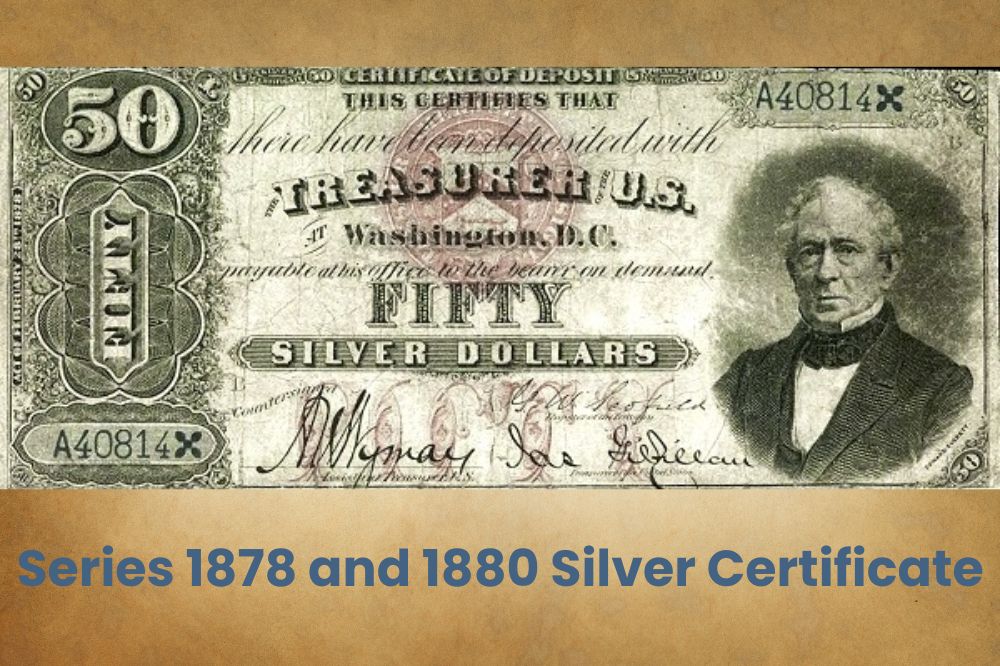
These early silver certificates were Certificates of Deposit and could only be used to pay taxes and customs fees.
These certificates were large-sized e legal tender in silver dollar denomination and backed by the Treasury Department. Denominations ranged from $10 to $10,000 and earned the nickname, horse blanket for their large size.
Series 1886, 1891, and 1908 Silver Certificates
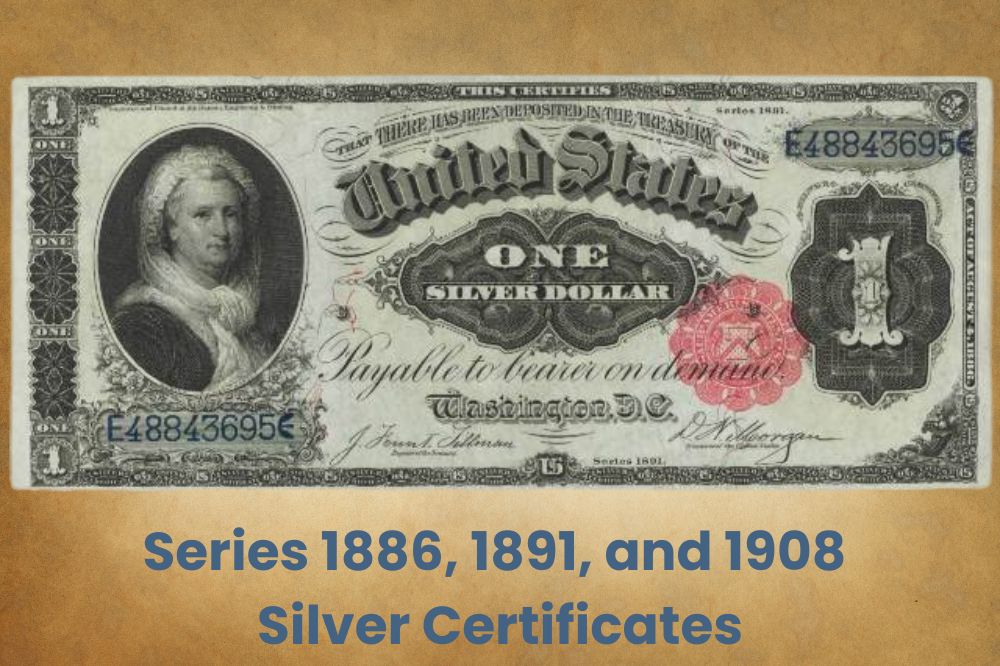
This second series entails silver certificates designed in 1886, 1891, and 1908, and the first two years depicted First Lady Martha Washington’s portrait on the obverse.
This series continues with all the denominations from the previous one but also includes $1 notes.
Series 1896 Silver Certificates
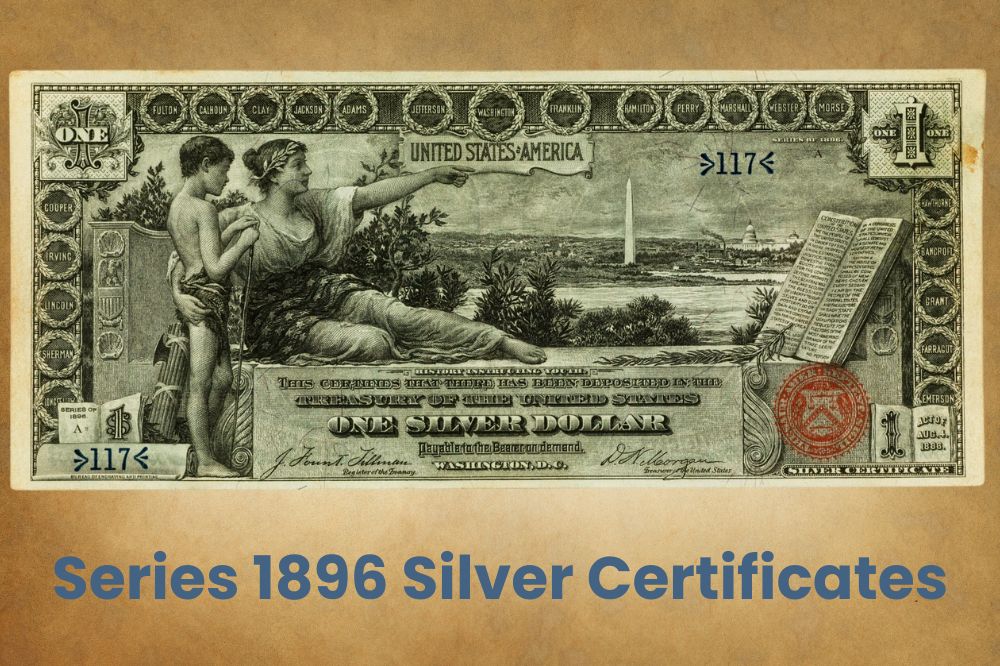
The third series of silver certificates is aptly called the Educational Series, as they portray allegorical figures named Science, Electricity, and History teaching the public.
Spotting a neoclassical design, Educational Series silver certificates are often touted as the most beautiful paper currency in U.S. history.
The silver certificates designed in 1896 included denominations of $1, $2, and $5 bills. George and Martha Washington’s portraits are shown on the $1 bill.
Series 1899 Silver Certificate Bills
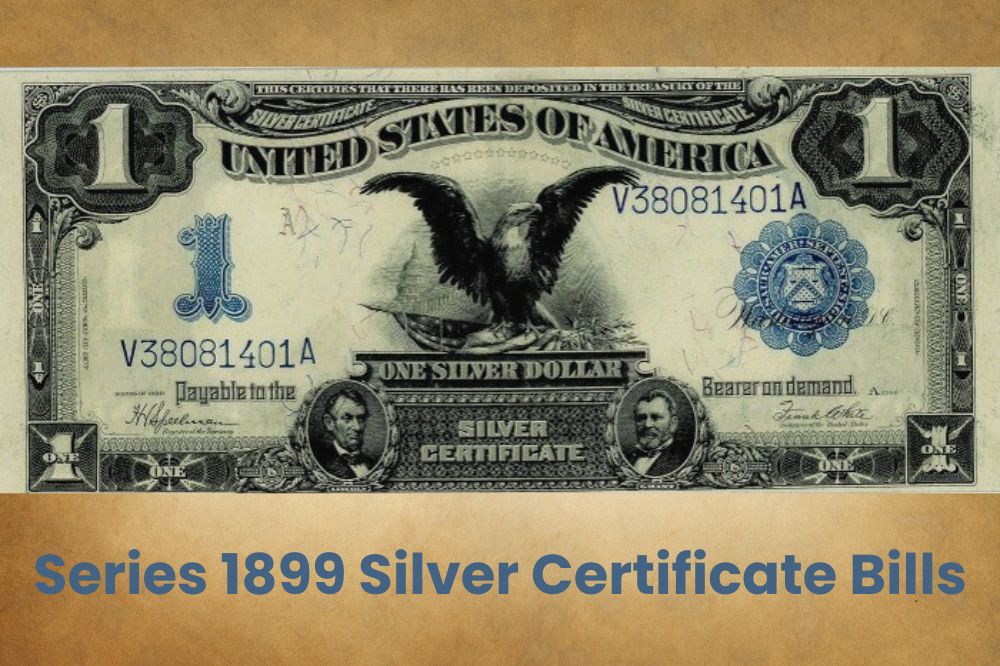
The silver certificates designed 1899 retained the same denominations from the 1896 series.
This series features three vignettes, one a Black Eagle, from which the 1899 series silver certificate bills are nicknamed.
Series 1923 Silver Certificate Bills
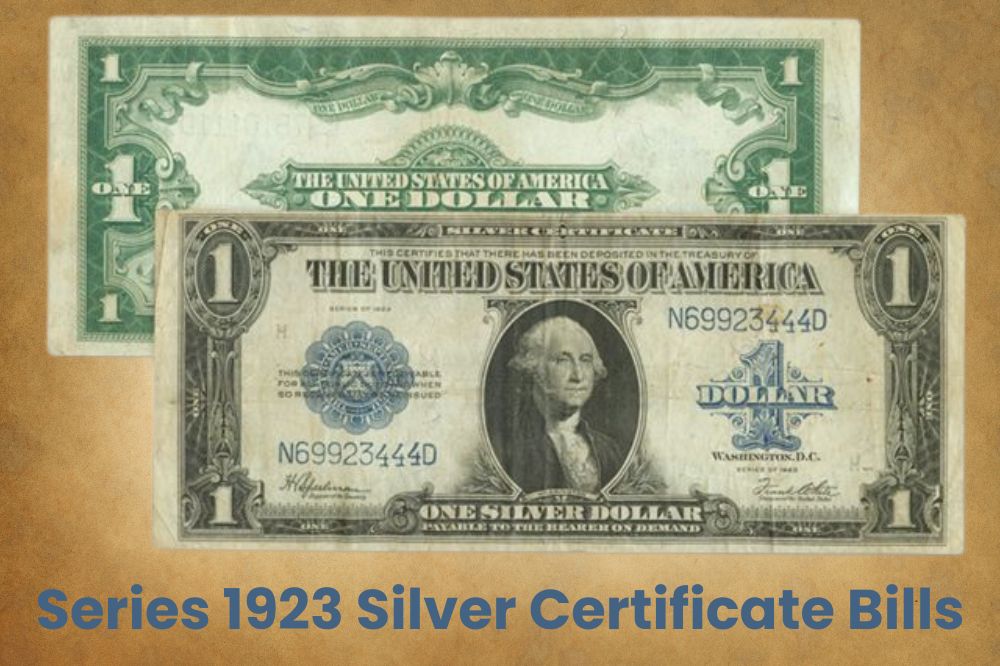
The 1923 series silver certificate bills only came in denominations of $1 and $5. This was also the final series of large-size silver certificates, as the Treasury began printing silver dollars in a smaller size that remains in use today.
This series comprises the most common silver certificates, thanks to the high mintage that characterized the production of these silver dollar bills.
A Brief History of Silver Certificate Dollar Bill
The United States government introduced silver certificates in 1878 under the Bland-Allison Act. The Act authorized people to bring their silver to the U.S. Treasury and, in exchange, receive certificates, which were more convenient and easier to carry than coins. Silver certificates could also be redeemed for silver equal to the face value of the certificate.
Before this, Congress had authorized a bimetallic monetary system as early as 1792, in which silver and gold were the main exchange mediums. A free coinage policy allowed raw gold or silver owners to bring these metals to the U.S. Mint and convert them into coins worth the raw silver coins.
However, silver was more expensive than gold, leading to the low production of silver coins between 1793 and 1873. For this reason, Congress approved the Coinage Act in 1873, ending bimetallism and the free coinage of silver while adopting the gold standard.
After plenty of protest from the public, silver miners, and investors, the government reintroduced free silver coinage in 1878 as authorized by the Bland-Allison Act. This Act required the government to buy silver worth $2-$4 million monthly and turn it into silver coins.
The increased production and circulation of silver coins were much welcomed; there was circulation of money, which was good for the economy. However, silver coins proved too cumbersome to carry around, necessitating the introduction of a lightweight silver certificate that could be used to redeem silver coins or silver bullion of the same denomination of the silver certificate.
The House of Representatives repealed the Coinage Act and required the Treasury to end the production and issuance of Silver Certificates in 1963. By 1964, the Treasury had stopped issuing silver coins in exchange for silver certificates; in 1968, silver certificate bills were completely obsolete.
Grading Silver Certificate Dollar Bills
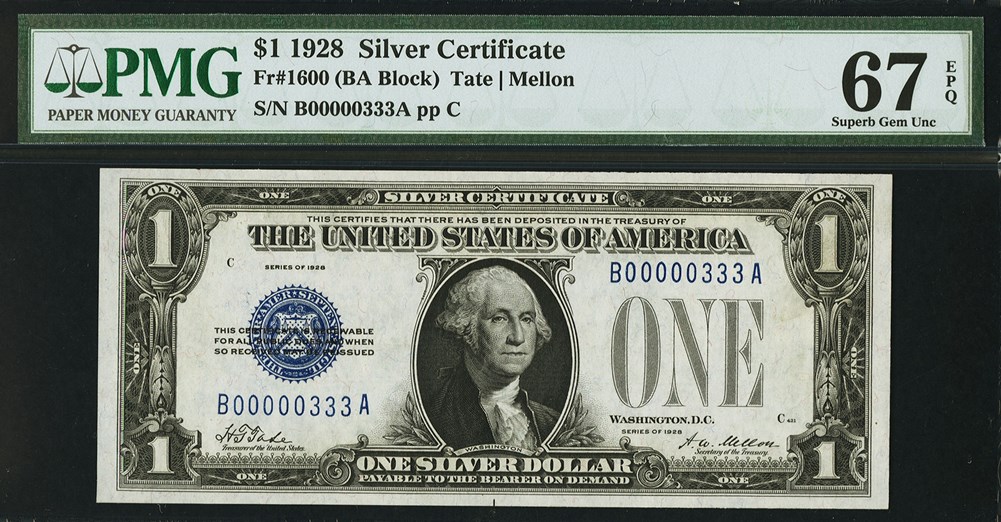
The condition is the most important when grading a silver certificate dollar bill. Examine the note for signs of circulation such as creasing, folding, and folding of ink color.
Gem condition or choice uncirculated silver dollar bills are the most desirable and may collect a premium compared to a circulated bill.
Circulated bills will be graded as fine to About Uncirculated—they will show clear signs of folding, creasing, wrinkles, dirt, and discoloration.
FAQ
What can you do with silver certificates?
Silver certificates were once redeemable for silver bullion worth the corresponding denomination. Although they are still legal tender today, silver certificates are worth less than their face value and cannot be used in day-to-day transactions, i.e., you cannot buy or sell anything using silver certificates. However, you can exchange your silver dollar for an amount worth its face value, although sometimes collectors buy these bills for more than their face value.
What makes a silver certificate valuable?
Silver certificates are generally less valuable or profitable than their face value. But rare ones can be valuable, often selling for hundreds or thousands of dollars. Silver certificates with peculiar serial numbers, high or low serial numbers, star notes, and those in gem condition can fetch good money.
What is the face value of a silver certificate?
Silver certificates come in various denominations, including $1, $2, $5, and $10. The face value of a silver certificate would, therefore, be its corresponding denomination. For example, the face value of a $1 silver would be about $1.

So I have a 1934 D series $20.00 bill. Serial number matches D12297158A. It has the green seal. The condition is very well. I’m not a collector or anything. Would love to know what the value would be ??